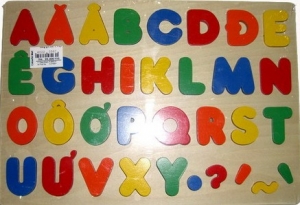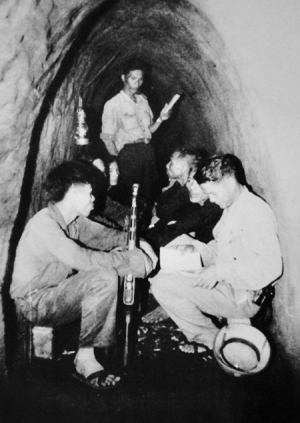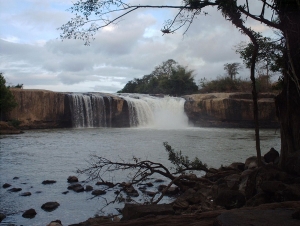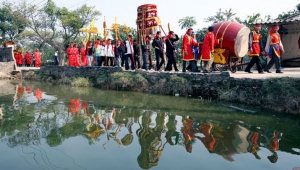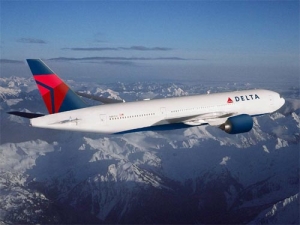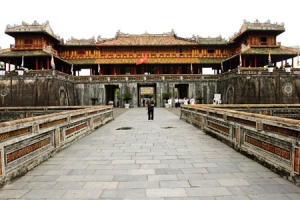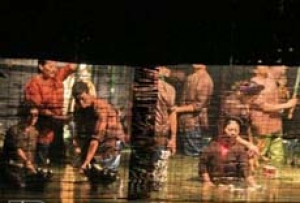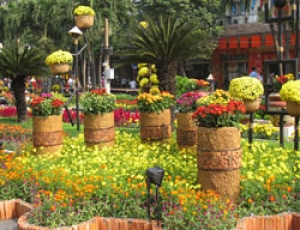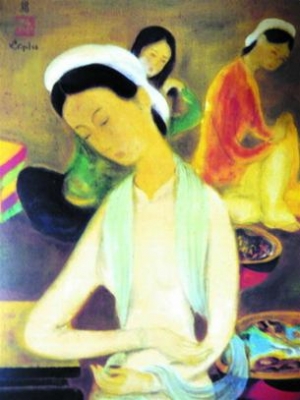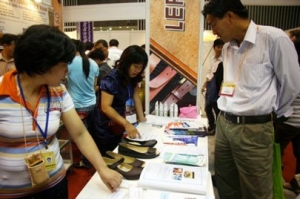
Asia Pacific Travel Team
Romanised script Quoc Ngu to flourish modern Vietnamese Literature
During the French colonial period, the origins of modern Vietnamese literature are found. The romanised script quốc ngữ was finally popularized throughout the country of Vietnam, which allowed the modern literature to break free from the restrictions of classical literature of China.
Originally devised by French Jesuit missionary Alexandre de Rhodes (1591-1660) as a means of propagating Roman Catholicism, quốc ngữ became a cornerstone of the French colonial educational system in the late 19th century and was initially rejected by Confucian scholars such as Nguyễn Đình Chiểu, who referred to quốc ngữ as 'the script of heretics'. However, following the Duy Tân ('Renovation') movement of 1907 Vietnamese intellectuals began to realise the potential value of quốc ngữ as a medium for disseminating patriotic and anti-colonial ideas.
As literacy gradually spread throughout the country, the development of modern printing methods facilitated the production of books, newspapers and magazines in quốc ngữ and both journalism and literature written in the romanised script began to flourish.
Meetings
Meetings are considered very formal in Vietnam. It is not common to commit to meeting a long time in advance. In Vietnam the meeting will be confirmed at most one week prior to the appointment.
It may make it difficult for you planning a trip but it is a reality in Vietnam. You should reconfirm your meeting one or two days ahead. You also should contact with your partner first to get a list of participants and their ranks so you know who you will talk with. Vice versa send your representatives before the meeting.
You will be led into a meeting room in which the Vietnamese are already present. Your team leader should enter first. And after greeting by making handshaking, your team will be invited for sitting across a table, leaders opposite each other and others seated in descending order of importance.
Small talk will come first. Business is addressed once people feel comfortable with each other. The head of the host team will deliver a short welcome speech, and then turn the floor over to the visitors. Your senior team member should speak for your company; avoid conflicting statements from other team members. When talking, your spokesman should address the senior Vietnamese representative. Vietnamese prefer to hear a proposal as a broad overview, and then respond to specific issues or questions point by point.
Business cards are a common opening to business meetings. It is very impressive if you prepare the business card which has two sides, one has your own language and the other translated into Vietnamese. Because it is a little bit difficult for you and your partner to distinguish foreign people so a very important point is you should put your picture into the business card. Business cards should be handed to all those attending a meeting because it is sometimes difficult to discern who the important players are and who will play what role in the future. Generally, a business card should be handed to the most senior person first. Cards should be presented with two hands to very important officials, but for all others there is no required etiquette.
By reading your hosts’ cards carefully, you can show respect and clarify the function of the person with whom you are speaking. Don’t disregard the cards or shove them in your pocket. Basically, treat them with respect but don’t obsess over them. In the case of large delegations, the exchange of cards may only take place between the most senior representatives. Other members of the group can exchange cards after the meeting is complete.
Gift and Gift-giving Customs in Vietnam
Gift giving is important in Vietnamese because of the significance of interpersonal relationships in Vietnamese culture.
First and foremost, do not encourage corruption. There is a clear cut between gift-giving and bribery. Nevertheless, it is common in Vietnam for exchanging small gift on certain occasions such as anniversary, Tet holiday… to express your respect, appreciation or gratitude.
Gift-giving customs depends on the context. If it is private gift for one Vietnamese partner you should give the gift at private occasion or at a business meeting if no other one presents. If you have gift for the whole office or company, you should give it after the business meeting with the whole office’s employee.
Do not wrap a gift in black paper because this color is unlucky and associated with funerals Vietnam. Gifts that symbolize cutting such as scissors, knives and other sharp objects should be avoided because they mean the cutting of the relationship.
Vietnamese may or may not open these gifts when they are received; leave the option to them.
You will also receive gifts and should defer to your host as to whether you should open it when received or not. Regardless of when it is opened or what it is, profuse thanks are always appropriate.
Understanding Vietnamese Business Culture and Etiquette
Vietnam has been joining WTO, and it opens a lot of opportunities to foreign companies who want to do business with Vietnam. With the Vietnamese economy opening up, more and more foreign companies want to invest in Vietnam.
However in order to avoid cultural disasters which could make the wrong move in doing business with Vietnam, here are some tips on how you can conduct a more successful business in Vietnam.
The initial approach
Vietnamese business contacts are mostly referrals; essentially a business relationship is struck based on another business associate recommendation. The best prices and deals often comes from a strong recommendation.
However, it is common today for cold calls and direct contacts, given the availability of the internet and the competitive nature of Vietnamese businesses. You may source from the internet, trade fairs, catalogues and brochures, advertisements and approach the Vietnamese companies directly through a call or email.
Alternatively, if you are seeking to invest in a factory in Vietnam, you can approach Vietnam Chamber of commerce and industry (VCCI) or a business advisory directly. They will be able to advise you on your best location based on your industry, raw material and manpower needs.
Business Relationship in Vietnam
Vietnamese business relationship inevitably becomes a social relationship after a while. Unlike Western business relationship which remains professional and perhaps, aloof, even after a long time, Vietnamese business relationship becomes a social one.
The more you share your personal life, including family, hobbies, political views, aspirations, the closer you are in your business relationship. Sometimes, a lot of time is spent discussing matters outside of business, but then a lot of time, the other party is also making up his mind about your deal based on how much he sees your personal relationship with him.
Seniority is important in Vietnam
Seniority is very important to the Vietnam especially if you are dealing with a State owned or government body. Instead of addressing the other party as Mr or Mrs so and so, it is always appropriate to address the other party by his designation for example Chairman Triet, Director Dung or Manager So and So.
When giving out business card or brochures, make sure you start with the most senior person before moving down the line. When giving out a business card or receiving one, ensure that you are stretching out with both hands with the card. Remember to face the card you are giving out in a manner such that the receiving party gets it facing him correctly.
Giving Face
Giving face is a very important concept in Vietnam. You must give the appropriate respect according to rank and seniority. For example, if you are buying gifts for an initial contact, make sure you buy better gifts for the senior managers instead of buying similar gifts across the board.
Similarly, sitting positions in a meeting room or a dining table is accorded accordingly to rank, importance and seniority. It is good to seek advice before embarking on your first meeting with Vietnamese business contacts to avoid making the wrong move.
Business Entertainment
Most business luncheons and dinners are held in hotels, restaurants, or government facilities. Usually your host will arrange for a dinner during the early part of your visit. You are expected to reciprocate by arranging for a return dinner, possibly in your hotel or at a well-known restaurant. If no formal dinner is indicated on your itinerary, you should still try to invite your hosts to dinner to show your thanks and appreciation for their arrangements. Business is not usually discussed at dinners, although it may be at luncheons.
Dinner in Vietnam usually consists of several courses, similar to a Chinese banquet. Several dishes will be put on the table and you will be expected to take some from each. Chopsticks are used in Vietnam, but most modern restaurants also have Western eating utensils.
Vietnamese beer or imported wines and liquor are usually served with the meal. It is appropriate for you and your host to exchange toasts, with the host usually going first. Individual toasts can also be expected during the meal. When toasting your host (or when acting as host yourself), stand and raise your glass with both hands in the direction of the senior or oldest Vietnamese present. A flowery but short speech about Vietnam's beautiful scenery, the friendship of your hosts, and prospects for a successful business venture are appropriate. Subsequent toasts may be made and answered from your seat. The end of the meal is usually signaled by a plate of fruit or other sweet dish. After waiting a respectful period after the last course is consumed, the guest is expected to make the first move to leave. Be sure to shake hands with all Vietnamese participants and conclude by thanking your host profusely.
Open a new route HCMC – Tokyo - Delta Airlines
One of the world’s largest carrier, Delta Airlines, on Monday announced the inauguration of its new daily nonstop service between Ho Chi Minh City and Tokyo. The new flight offers passengers easy connections to and from 10 US gateways, including Los Angeles, Atlanta, Detroit, Portland, Seattle, San Francisco and Honolulu.
The airline will also add flights from Tokyo to Salt Lake City, Utah on June 3 and to New York City on June 4, which offers more connections in the US, Delta said. The flight will be operated by Northwest Airlines using a 160-seat Boeing 757-200 aircraft with 16 seats in business class and 144 seats in economy.
The daily flight will depart Tokyo at 6:45 p.m. and arrive in HCMC at 11:10 p.m., while the return flight will leave HCMC at 6:10 a.m. on the following day and arrive at Narita Airport at 2:05 p.m. All times are local.
Hue leads in tourism attraction
Thua Thien-Hue leads other provinces and cities in attracting tourists, said the Director of the provincial Department of Culture, Sports and Tourism, Phan Tien Dung. The figure will be announced in December by tourism experts and managers based on criteria set by the Institute of Tourism Development Research. By the end of November, 2010. Thua Thien-Hue had received nearly 1.4 million visitors, a year-on-year increase of 11.7 percent. The number of foreign arrivals to Hue also increased by 7.9 percent. Its tourism sector earned VND774 billion, up 20.4 percent compared to the same period last year.
The number of foreigners visiting Hue through Chan May Port reached 20,000, four times higher than in previous years. Many luxury cruise ships have docked at Chan May Port, such as the Queen Elizabeth II from the UK and the Rhapsody of the Seas from the US, often carry out around 2,000 passengers from countries across the world.
In addition to Hue’s imperial relics, the province has more than 500 festivities, including more than 100 traditional festivals which have been revived and promoted. The Hue Festival is held biennially on even years and the Hue Traditional Craft Festival is also organised every second odd year. They have become a special and unique part of Thua Thien-Hue.
Traditional craft villages with famous products have been preserved and promoted to attract more visitors, such as the My Xuyen sculptures, Phuoc Tich ceramics, Thanh Tien paper flowers, Lang Sinh traditional pictures, Phuong Duc bronze casts and Zeng A Luoi weaving.
The province now also promotes nearly 1,700 traditional and imperial recipes. With all these advantages, Thua Thien-Hue became the nation’s cultural and tourism center.
Thanh Hai Water Puppetry
Water puppetry is a mainstay of the performing arts in Viet Nam. In villages, it is often performed on the pond that is located close to the communal house and attracts thousands of spectators from near and far. As the lunar year draws to an end, members of the Thanh Hai Puppetry Troupe in Thanh Ha District in the northern province of Hai Duong, jump into action and diligently prepare for their upcoming performances. Preparations not only include rehearsing, but also maintenance on the puppets.
With its more than a 300-year-old history, Thanh Hai water puppetry is performed at most major festivals and celebrations nationwide, including the cultural festival in Hue, the National Water Puppetry Festival and the yearly Hung Kings’ Temple Festival. Stories about the Thanh Hai Water Puppetry Troupe, which includes an outstanding collection of amateur performers and has won numerous prizes for their programme, attract the attention of researchers, cultural organizations and individuals interested in the art of Vietnamese water puppetry.
 |
|
Thanh Hai water puppeteers standing in water behind a bamboo curtain manipulate the puppets. |
Water puppetry performances mainly reflect the daily activities and life of residents living in the northern river delta. Nguyen Van Huan, who was head of Thanh Hai Water Puppetry Troupe, said: "Thanh Hai water puppetry has developed over hundreds of years thanks to the local villagers who wholeheartedly support this art of their native homeland and to the devoted performers who constantly renew the vitality of this traditional art."
Pham Khac Xoa has manipulated the puppets since he was a little boy. Now at 36, he is entrusted by the elderly villagers to be head of the troupe. Xoa said: "Experience handed down to us from the elderly villagers-performers is an invaluable treasure. We want to keep the troupe alive, so often exchange ideas with other troupes around the country. By doing so, we preserve and develop this traditional art.”
 |
|
“Legend of the Sword Lake” item |
Water puppetry certainly isn’t an easy art to perform. The show is held in a pond or lake, and the puppeteers have to stand behind a bamboo curtain and in water, sometimes waist deep. The puppet is attached to the end of a long bamboo pole that has a string or cable running up the centre of it that is pulled or pushed to control the puppets' hand and leg movements.
Thanh Hai water puppeteers have regular meetings to rehearse the old repertoire, compose new skits or make new puppets. Starting with only five acts, Thanh Hai troupe has now a rich repertoire with dozens of acts, some of which are very unique and had won prizes at the national puppetry festivals, such as the frog-catching man, tiny firecrackers, going-to-the-field festival, etc. It also has hundreds of puppets for diverse and interesting performances.
 |
|
“Fishing” |
Thanh Hai troupe now has 36 members, of whom 18 members often go to perform in many localities, including Hanoi, Hai Phong and Quang Ninh Province. In recent years, the troupe participated in many festivals nationwide, including Thua Thien-Hue Provincial Puppetry Festival and the National Puppetry Festival. In 2005, at the First National Amateur Water Puppetry Festival, the Thanh Hai Water Puppetry Troupe was awarded the First Prize. The success has been attributed to the great effort made by the local water puppetry artisans and performers.
 |
|
“Procession of Firecrackers” |
Like other villages in the Vietnamese northern delta having symbolic images, such as the communal house's steep roof, the landing place and the old banyan tree, Thanh Hai Village is further known for its long-standing water puppetry performances. During the village festival or other celebrations, there is always water puppetry shows with animated puppets, cheerful music and skilful performers, who are hard working farmers, and optimistic and skilful artists at the same time who help in preserving the traditional art of water puppetry.
People's Ho Chi Minh City welcome to TẾT
To meet people's entertainment needs during the Lunar New Year (Tet), Ho Chi Minh City (HCMC) government and related departments are preparing a range of cultural activities to welcome the Year of the Cat.
This year, under leadership of the Ho Chi Minh City People's Committee, the Saigontourist Travel Services Company in conjunction with local departments will organize a range of programs in the city center including the Nguyen Hue Flower Street, the "Tet" (cylindrical glutinous rice) Cake Festival, Shining City, Lunar New Year's Eve Fireworks, Street Decoration and Door Shows with the themes of Vietnamese soul, Tet in the south and safe and happy spring to serve tourists from 7pm on January 31 until 10pm on February 6. The highlight of the festival this year will be the Nguyen Hue Flower Street. Following the theme of "the Spring Dawn" of 2010, this year's theme will be "NewHeights". Nguyen Hue Flower Street will reflect enormous efforts of Ho Chi Minh City to achieve higher economic, social and political results.
As part of the activities welcoming in the Year of the Cat, the Ho Chi Minh City Department of Information and Communications will, in conjunction with the Ho Chi Minh City Association of Journalists launch the Spring Newspaper Festival of 2011 on January 20-21, 2011 at the Ho Chi Minh City Youth Palace of Culture. This is an annual Ho Chi Minh City Spring event. Nguyen Anh Tuan, the deputy director of the Department of Information and Communications, said that the Spring Newspaper Festival would feature 45 pavilions which showcase all types of the press. It is estimated that the festival will feature about 200 centrally-governed newspapers, local newspapers and newspapers from surrounding provinces. Many of the newspapers will release special New Year editions, which will be given to students, soldiers and workers in industrial zones. In addition, a meeting among famous journalists, students, workers and soldiers will be held. People who attend the festival will receive free health advice and there will be competitions for the most well-designed booth and publication front cover.
A book street festival will also be organised. Nguyen Hoang Ha, a representative from the Department of Information and Communications, said that the book street festival would feature the Fahasa Book Distribution Company, Thanh Nghia Book Distribution Company and Ho Chi Minh City Library, with the intention of promoting an increased appreciation for literature, especially among the young. Many other activities such as the publishing of e-books, books for the blind and meetings with famous poets and writers will be organized. Visitors can borrow books and read them on-site, exchange and buy books. Twenty old books will be displayed.
A representative from the Ho Chi Minh City Library said that the book street festival would focus on children, and host 3,500 books for young readers. In addition, the library would hold a book exhibition attracting the participation of many provinces.
Vietnam Silk Painting conquer the heart of art lovers
Today this art has become famous around the world for its simple poetic themes and vibrant colors. In Vietnam, painting on silk is popular. Vietnamese artists found these technique to be a unique way to create mystique and a charming sense of mystique in their paintings.
The Vietnamese style of silk painting emphasizes softness, elegance and has a flexibility of style. The success of a silk painting very much depends on the quality of the silk. Differently with other kinds of paintings, the silk canvas are usually not painted. The Vietnamese traditional silk painting style tends to use the silk canvas directly as the background of the painting.
Vietnamese silk paintings typically showcase the countryside, landscapes, pagodas, historical events or scenes of daily life. The colors are used delicately with the canvas to make Vietnamese silk paintings. The delicate white color found in the sky, water, or human portrait, is the color of silk. The color of silk is well known to describe human figure in the paintings of many famous vietnamese artists. Delicate color and silk background give the paintings such an harmony with the nature. Whatever style they follow, silk painters must have an intimate knowledge of the material and fully exploit its shininess and its attractiveness. Painting silk is full of changing and unexpected characteristics, and a wrong stroke of the brush is irreversible.
After a long period of development of techniques and styles, silk painting reached its highest period of success during the years 1925-1945.

Silk-paintings, together with lacquer paintings, constitute the creations that give rise to the present:.day Vietnamese plastic arts. Deeply rooted in the people, the silk-painting is frequently renewed, and time is an impartial judge.
Vietnamese silk painting has its own unique character and colours that are distinctly different from those from ancient China and feudal Japan.Each painting is a great description of the beautiful nature and talented skills of the Vietnamese. By using contemporary colours, Vietnamese silk painting has won the hearts of many art lovers nationally and Internationally.
International Trade Fair Of the Central Region And Central Highlands Key Economic Zone
Being listed in the National Trade Promotion Program in 2010, the International Trade Fair of the Central and Highland Key Economic Zone 2010 will be held within the framework of Hue Festival 2010.
Over 400 stalls at the fair will contribute to trade promotion, exchange, collaboration and marketing products among domestic and international businesses. This is also a chance for producers to expand their markets and partnership to boost the trade development of the Central Region and Central Highlands Key Economic Zone. The fair will last from June 5th to 11th, 2010 at Thua Thien Hue Sporting Centre.


